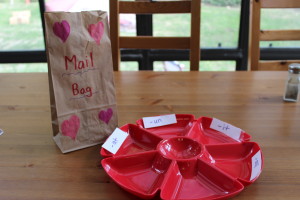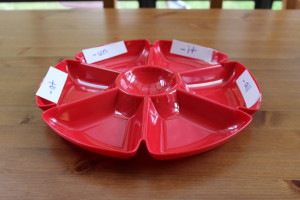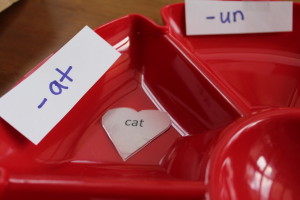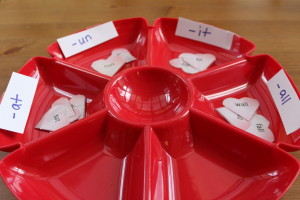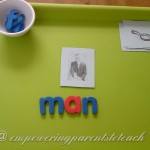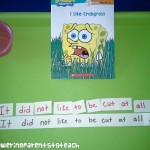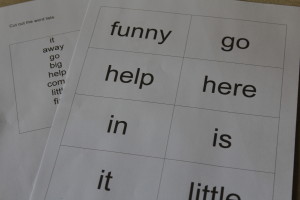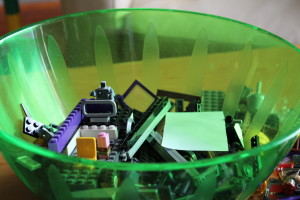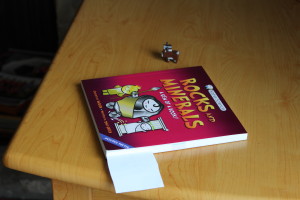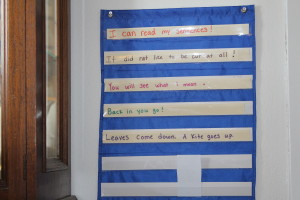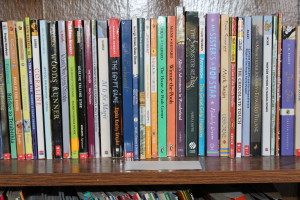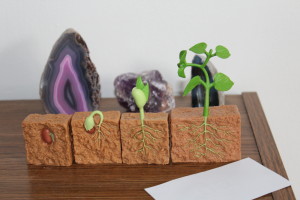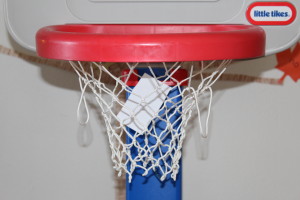Once your child has mastered the individual letter sounds, word families can be the next step in your child’s phonological awareness. Word family is a term that refers to words that have the same ending letter pattern and corresponding sound. For example, cat, bat, rat, all end with -at, therefore, they are all in the -at family. I talk more about word families in the post, Learning to Read: Word Families. If you would like more information on what word families are and why they are helpful for young readers, take a minute to visit that post before doing this activity.
Materials:
- Word Family Hearts (print here: Color version or B&W version)
- Word Family Label (I made these by cutting index cards)
- Tray with at least four compartments or small boxes, or small mailboxes (use what you have available)
- Small Paper Bag
- Markers or Crayons
Here’s what our set up looked like:
Before the Activity:
1. Print and cut out the hearts. Laminate them if possible.
2. Decorate the small paper bag to use as the Mail Bag. You could also have your child do the decorating!
3. Fill the mail bag with the small hearts.
4. Attach the word family labels to your boxes, tray, or mailboxes.
Activity:
1. Inform your child that today s/he is going to deliver hearts, just like people deliver valentines to their friends on Valentine’s Day.
2. Show your child the mail bag and let him or her know that inside the bag are hearts. Each heart has a word on it. His or her job is to deliver the heart to its right place.
3. Next, show your child the tray (or mailboxes) with the word family labels. Tell your child that s/he is going to put the word with its family. Look at each word family label and have your child read the rime*. Help your child if needed. Remind your child that any word that ends with -at, goes with the -at family. Do this for each family. Just like family members all have the same last name, word families have the same last sound. You want to explain this in a way that makes sense to your child.
*Rime refers to the part of a word that follows the initial consonant or group of consonants. For further information about onsets and rimes, click here.
4. Have your child take out the first word. For the first word, you will want to walk through the activity with your child. Have your child read the word out loud. Ask your child what sound they hear at the end, is it -at, -un, -it, or -all? I would say each one aloud while pointing to the word family label. Say the word again if necessary. Your child should be able to hear the end sound (the rime) and match it to the correct family.
5. If your child struggled, do the next one together. Model your thinking out loud. For example, if you take out the word “sun”, read the word and verbalize your thought process. You may say, “I will look at the word families and say each one out loud to what matches.” “At, sun, hmm, they don’t sound the same at the end so they don’t rhyme. Un, sun, they sound they same at the end! They rhyme! The word ‘sun’ goes here with the -un family.”
6. Let your child do the rest by himself (or herself), providing support when needed. If your child places one in the incorrect spot, take the word out and help him or her figure out the correct place.
7. Keep playing until all the hearts are delivered!
As always, keep it fun! Your child is learning so much from you!
More reading activities:
Learning to Read: Word Families
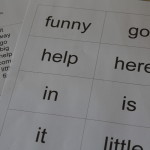
This post is linked to Montessori Monday. Click on the link below to see more fun learning activities!


